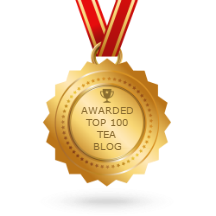
For as long as I have been writing about tea the common wisdom about American iced tea consumption is that we drink a lot of it. The figure given for the percentage of tea we drink in iced form is typically in the range of 80-85%. Which I don’t dispute, although I find it odd that the figure hasn’t changed much over the course of about eight years.
But in any event, you can’t argue that we drink quite a bit of iced tea. But what about the rest of the world? Well, the limited space here precludes taking an in-depth look at the great wide world of iced tea but here are a few tidbits.
Perhaps one of the most well-known variations on the iced tea theme these days is bubble tea. It’s exact origins are apparently something of a matter for disagreement but it’s safe to say that it got its start somewhere in Asia. Typically made with tea and strong flavorings and sweeteners poured over ice, the distinctive feature of bubble tea is the small tapioca balls that drinkers slurp up through a specially modified straw. More of our articles about bubble tea, here.
Other popular forms of iced tea that are popular in Asia include Hong Kong-style milk tea, which is made with black tea and evaporated or condensed milk and may be consumed as a hot drink or iced. Thai iced tea can be similar, but is apparently made with a wide variety of ingredients and flavorings. This recipe from a Thai foods company calls for black tea, lemongrass, Thai ginger, sugar condensed milk and coconut milk. Here are some additional thoughts on the matter from a few Chowhound posters.
Many of the biggest names in iced tea, the ones that line store shelves and tend to dominate the market here in the United States, have also tended to do the same thing in many other markets around the world. The names will be familiar to nearly anyone who’s ever set foot in an American supermarket but there are names of iced tea makers in other lands that won’t be quite so familiar.
Bottled and canned iced tea is particularly popular in Japan, as is coffee presented in the same forms. Which, as the Wall Street Journal remarked recently, had overtaken iced tea for a time, in spite of the fact that Japan is well known as a producer of green tea. But the pendulum is apparently set to swing back, with Japan’s iced tea makers again regaining their position as king of the packaged beverage hill. Read more about it in my recent article, here.
For a look at how one Austrian iced tea maker does things, check out their web site, here. In Indonesia, the Sosro company makes a line of iced teas that includes Tehbotol Sosro, their flagship brand, as you can see here. Unicer, one of Portugal’s largest beverage makers, offers a bottled concoction called Frutea, which as the name suggests, is a mix of tea with fruit juice.
See more of William I. Lengeman’s articles here.
© Online Stores, Inc., and The English Tea Store Blog, 2009-2014. Unauthorized use and/or duplication of this material without express and written permission from this article’s author and/or the blog’s owner is strictly prohibited. Excerpts and links may be used, provided that full and clear credit is given to Online Stores, Inc., and The English Tea Store Blog with appropriate and specific direction to the original content.



Leave a comment